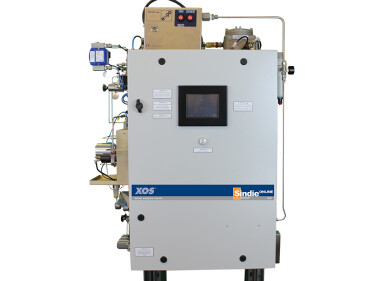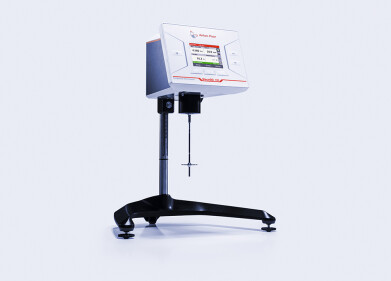Analytical instrumentation
Liquefied Gas Injector Complies with New GC method ASTM D7756-11
Oct 13 2011
The ASTM method for “Residues in Liquefied Petroleum (LP) Gases by Gas Chromatography with Liquid, On-Column Injection” has recently been balloted and approved as D 7756-11. Da Vinci Europe laboratory solutions B.V. (DVE) from The Netherlands developed the Liquefied Gas Injector that complies with this new ASTM method in close cooperation with Shell Global Solutions. The new method will be available for distribution in December 2011.
LPG offers several benefits over traditional fuels as LPG is a clean-burning transport fuel with a high energy content and the infrastructure is well developed. One of the fuel specifications for LPG concerns the amounts of oily residues, as these lead to troublesome deposits and material changes. Conventional test methods to specify the oily residues require the evaporation of large amounts of LPG and therefore present a high safety risk. A new technique to determine the oily residues using a fast, safe and accurate method (ASTM D 7756-11) is based on Gas Chromatography combined with the Liquefied Gas Injector (LGI).
The Liquefied Gas Injector is able to inject gases in liquid phase under high pressure directly on-column through the proven "Gasoline Direct Injector (GDI)". The GDI is used in the automotive industry to inject fuel in the combustion chamber. After injection, the GC analysis technique uses a vapour exit to flush the LPG light end fraction. The oily residue remains on the column and is separated by boiling point order. The result is reported as concentration in mg/kg (mass ppm). The analysis range starts from 10 up to 600 mg/kg having a repeatability of 5% and a relative standard deviation between 2.4 and 4.7%. The required analysis time is less than 30 minutes.
The LGI was also applied to determine pTBC in Butadiene. Results demonstrated that the relative standard deviation is less than 4% with an analysis time of 15 minutes. Also a proof of principle has been carried out successfully for the analysis of elemental sulphur and DIPA in LPG.
After the product introduction in 2010 the LGI was awarded for the Best New Technology at the Gulf Coast Conference of 2010. The current installed base includes LPG customers located in Africa, Australia, Asia, Europe and U.S.A. Their experiences with the LGI have proven that the new technology is safe, fast and accurate. Additional benefits are: the results are not only reported as a value in mg/kg, the chromatogram also indicates the composition of the contamination and helps tracing the source of contamination.
Digital Edition
PIN 25.6 Buyers' Guide
January 2025
Buyers' Guide Directory - Product Listings by Category - Suppliers Listings (A-Z) Articles Analytical Instrumentation - ASTM D7042: The Quantum Leap in Viscosity Testing Technology -...
View all digital editions
Events
Jan 20 2025 San Diego, CA, USA
Jan 22 2025 Tokyo, Japan
Jan 25 2025 San Diego, CA, USA
SPE Hydraulic Fracturing Technology Conference and Exhibition
Feb 04 2025 The Woodlands, TX, USA
Feb 05 2025 Guangzhou, China



















